1. What initially sparked your interest in neuroscience?
Science has always interested me. Even as a young child I wanted to be a scientist or work in a scientific field in some capacity. My first research experience was working in a clinical cancer lab for a few years before attending university, where I decided to study pharmacology.
In my final year of university, I took a course on pharmacology of the central nervous system that really piqued my interest. I found it fascinating that such a complex organ like the brain could be described in neurochemical terms and that, when things go horribly wrong, you could treat the malady because you understand brain neurochemistry.
People typically are interested in psychology, how the brain and mind work, but this idea that you could empirically understand how the brain functions really hooked me on neuroscience.
2. What was the evolution of your career?
For my PhD, I attended King’s College and my focus was developmental biology. At this point, I was more interested in how does the neurochemical system develop in the embryonic brain, specifically development of vesicular neurotransmitter release. Following my PhD, I went to ETH Zurich in Switzerland for my post doc and stayed in the developmental neurobiology field, switching from studying neurochemical development to brain development from a cell biology point of view.
How does the brain grow, how do the nerve connections find each other, how does the brain as a whole create itself; trying to answer these questions in a simplified model system. Basically, I was investigating how the ends of growing neurons navigate the brain to make the appropriate connection and the guiding or signaling molecules involved in this process.
After my post doc, I returned to London and joined Eisai Research Laboratories, which is a Japanese pharmaceutical company that was big into Alzheimer’s research, so I was working on neurodegenerative disorders. Next, I went to work for Prescient Healthcare Group, which is a scientific consultancy company, so my position was bigger picture, working with a number of pharmaceutical companies involved in different areas of neuroscience research. I then joined Gain as a scientific advisor in fall of 2020.
3. You’ve been on the academia side and the industry side. What factors lead you to choose a career in industry over academia?
I think I became much more interested in the bigger picture of research. Academic research is fascinating and important discoveries are made, but it is more individualistic. I really enjoyed being part of an organization where everyone is working towards a common goal.
With industry, you feel closer to the therapeutic development process because companies have the resources and machinery necessary to bring a drug to market from conception. Drug discovery can occur in academic labs, but to get the drug from the lab to patients, you need the resources to run clinical trials, mass produce the drug, and distribute the drug to patients. So, for academic researchers to bring a drug to market, researchers often need to collaborate with other researchers and pharmaceutical companies.
Working in industry is like having a built-in collaboration network where all of these steps can happen under the same roof, which makes drug development much easier. I found the idea of being involved in every step of the drug development process very interesting, and that ultimately drew me to industry over academia.
4. You have worked in both research and leadership positions. Which do you prefer and why?
I prefer working in leadership positions over purely research positions. As mentioned previously, research is really fascinating, but you are a lone researcher with a small piece of research. When you are in a leadership position, it’s not just the small piece each individual researcher works on, it is being able to be involved in the research of several really smart, enthusiastic people.
In a leadership position, you are able to learn about their research and really encourage them, which I enjoy doing. I loved when researchers would come to me and discuss ideas I had not thought about, maybe not even fully understood at first, and then by the end of the discussion I was convinced to explore their ideas. Being in a leadership position allows you to guide and mentor people while at the same time learning from them as well.
5. How has the landscape for women in STEM and industry changed over the course of your career?
The landscape has changed and improved, but not as quickly as I thought it would have several years ago. I’ve spent most of my career being the only woman in the room, and now there may be more women, but not necessarily fifty-fifty. I think in biology there are more women than in some of the other STEM areas, and there are a lot of women working in labs, but they don’t necessarily get into leadership positions and I’m not sure why.
But I think there are different challenges for women, especially in research. If you want children, taking time off can be quite hard because you have to keep up with the demanding pace of research. I think there are a lot of pressures on women that can make it difficult for them to get leadership positions.
However, I think that the more women that move into leadership roles, the more other women see these roles as a possibility. When I was a child, a girl may not have considered a career as a doctor, instead thinking she would be a nurse. Now becoming a doctor is very much a career women consider. If people can see themselves reflected in a career or position they may not have previously considered, that may inspire them to pursue that career or position. To keep it simple, it has gotten better, but I would still like to see more women in leadership positions. So, it continues to get better but there is still more to be done to get equal representation.
6. As a scientific advisor for Gain Therapeutics, what does this role entail?
My role as a scientific advisor has been to try to understand the bigger picture of what Gain is seeking to achieve and sharing my thoughts and experience with them. This involves talking to the individual scientists, understanding the aims of their research, and also recognizing potential pitfalls and coming up with solutions.
Gain is trying to tackle complex diseases, and it is not always going to run very smoothly, so I am there to help smooth out the wrinkles. Another part of my role is trying to bridge the science with the business needs. Gain is doing impressive and important science, but the company also has to attract investors and they want to partner with larger companies as well, so that is another aspect of my role. I’m very interested in both the science and business sides so that comes very easily to me. I also try to bring a bit of pragmatism to my role.
Scientists are very passionate about what they do, which is wonderful, but you can’t explore every avenue. I think it’s important to keep a balance between scientific enthusiasm and what you can realistically accomplish, and I think Gain does that very well. It’s a great place to work in terms of how nicely everyone interacts with each other and the great collaborative spirit that exists here. There are also lots of collaborations with external partners and one of the things that interested me in Gain was their relationships with outstanding organizations such as MJFF. It’s a great experience and to me it feels like somewhere between working in academia and pharma.
7. What innovations are you most excited about at Gain Therapeutics?
I am most excited about Gain’s SEE-TxTM platform and that this technology has the potential to discover and develop drugs for, thus far, undruggable targets in order to treat really complex diseases. Recently they’ve branched out from lysosomal storage disorders to other therapeutic areas, such as oncology and neurodegenerative disorders as well.
This technology is really exciting because some current treatments, for example, enzyme replacement therapy for lysosomal storage disorders, cannot cross the blood brain barrier. So, any neurological or neuronopathic sequelae can’t really be treated. However, since Gain’s technology allows for the discovery of small molecules, we can identify molecules able to access the brain and other inaccessible tissues and can treat these issues.
Additionally, Gain is using this technology to discover drugs able to bind to allosteric binding sites on proteins which can increase specificity and efficacy of a drug. This platform really has the potential to tackle really difficult diseases which haven’t been well served until now.
8. What do you think is going to be the exciting breakthrough and what role will Gain have in this ecosystem?
I think the exciting breakthrough is the alphafold database that can predict the protein structures of molecules. The fact that this is an open access database increases the potential for companies like Gain to use their proprietary technology to increase their output exponentially. Also, there are a lot of companies working in AI, and Gain fits into this ecosystem as well. I think it’s a very exciting time for companies like Gain that are doing virtual technologies and screenings.


